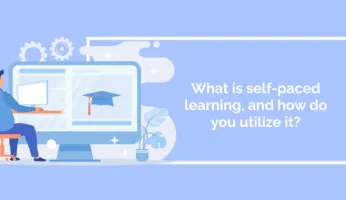
How can businesses return to normalcy after the COVID-19 outbreak subsides?
There is no easy answer to this question, since the current global crisis is unprecedented in both its scale and its impact.
What constitutes normalcy today could change tomorrow, especially if there is a resurgence in infections. New public health measures, for instance, often impact a number of industries, particularly businesses that involve in-person customer service.
Despite such uncertainty, however, the remainder of the crisis – as well as the period following the crisis – are predictable to a certain extent.
In this article, we’ll explore a few principles and best practices that can help organizations plan for the future, maintain continuous business operations, and return to normalcy after the crisis has ended.
How to Return to Normalcy After the COVID-19 Outbreak Ends
Here are a few tips and strategies that can help businesses map out a pathway through the crisis and, ideally, return to normal operations.
Understand that we are entering a “new normal”
Quite a few organizations are predicting that the current crisis will usher in an era that looks quite a bit different from the one we are all familiar with.
Some are calling this the “new normal,” while others have labeled it the “next normal.”
When mapping out a pathway through the remainder of the outbreak, it is important to bear this possibility in mind – namely, that we will be entering a “normal” that is quite distinct from the one we have just left.
Research firms such as McKinsey, Gartner, and Deloitte have all predicted as much, and many government institutions have made similar suggestions.
According to these predictions, we could see changes in:
- Economic and social structures
- Customer and employee expectations
- Government regulations
- The competitive landscape
Before even beginning to plan for a return to normalcy, therefore, it must be understood that tomorrow’s normal may look very different from yesterday’s normal.
Expand beyond business continuity to organizational resilience
During the tumultuous COVID-19 crisis, business continuity and disaster recovery became top priorities for many organizations.
Such response efforts are certainly critical, but it pays to look beyond continuity towards a more comprehensive risk mitigation strategy.
Instead of only focusing on response plans, organizations should:
- Build business processes and systems that are more agile and adaptable
- Be ready and willing to implement organizational change when necessary
- Understand the difference between organizational resilience and business continuity
- Develop a digital-first mindset, strategy, and culture
A multi-pronged strategy will not only develop response and recovery plans, in other words, it will also focus on cultivating traits, strategies, and processes that will mitigate, reduce, or remove risks before they occur.
Forecast, plan, and pivot
In a stable economic environment, predicting future trends is relatively straightforward – after all, most current trends will continue to develop linearly, without a great deal of variation.
However, crises can significantly alter the course of those events. And long-term, complex crises, such as the COVID-19 outbreak, can make it much more difficult to accurately predict future trends and events.
With the right approach, though, it is possible to plan for several scenarios simultaneously, by using existing data about the crisis.
So far, for instance, we have seen most of the variables that impact the COVID-19 outbreak, which mainly revolve around public health mandates and their impact on the economy.
As long as other variables do not enter the picture, it is possible to predict the overall shape of the recovery efforts, even if timelines remain unclear.
Deloitte suggests planning around the “peaks” of government restrictions, which are the main factor that impact business operations.
Rising-peak business plans would design strategies built for times when government restrictions are increasing.
Post-peak and “towards recovery” business plans, on the other hand, would be implemented when those restrictions are easing.
Gartner has suggested a similar approach, using line graphs to model potential recovery scenarios.
Regardless of the model or models one chooses to use, it is important to plan for multiple scenarios rather than just a single scenario – and just as importantly, to stay adaptable and be ready to modify plans when necessary.
Become a digital-first organization
The digital age is already upon us and the current crisis is, if anything, accelerating digital transformation at a global level.
Thought leaders in many industries have long touted the benefits of digital transformation and digital-first strategies.
The current crisis, however, demonstrates that digital transformation is not just advantageous, it is necessary.
During the outbreak, for example, working from home became a necessity for businesses around the world, which naturally required a certain level of digital maturity.
But remote working was not the only area where digital innovation and transformation began to accelerate.
Others included:
- Healthcare
- Online education
- Robotics
- Fintech
In short, the COVID-19 crisis became a catalyst for technological innovation in a range of industries, and those innovations will continue to accelerate for the foreseeable future.
To keep up in a digitizing world, it is imperative to develop a digital-first strategy that accounts for those changes and adapts accordingly. As mentioned, we may not know precisely what the “next normal” will look like, but one thing is certain: digital technology will be an integral part of it.
WalkMe Team
WalkMe spearheaded the Digital Adoption Platform (DAP) for associations to use the maximum capacity of their advanced resources. Utilizing man-made consciousness, AI, and context-oriented direction, WalkMe adds a powerful UI layer to raise the computerized proficiency, everything being equal.



